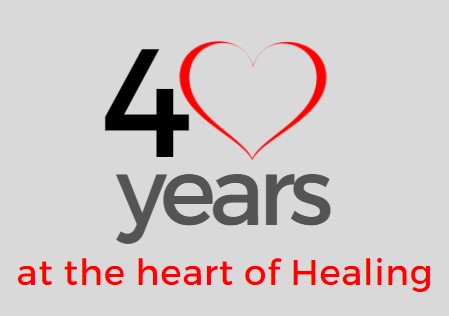CHO 40 Year Anniversary Thoughts by Bob Charman
As part of our 40th anniversary year celebrations, some former Board members look back at their time with The Confederation of Healing Organisations and share their memories. Thanks go to Bob Charman, Chair of the Board from 2006 to 2012 for sharing his thoughts....
"My appointment as Chair in April, 2006, was as much a surprise to me as it probably was to the then Board of Trustees, as I am not a healer.
The Board had been going through a rather unproductive period without a Chair, and there was a strong desire to have a fresh start. I was a retired physiotherapy lecturer who had studied, and had given talks on, the research literature on Healing, and a member of the Doctor Healer Network of which Michael Dibdin, a CHO trustee, was then Chair. We became good friends and Michael had suggested to the Board that maybe I would do. After accepting an invitation, I duly turned up, was inspected from head to toe, and voted in! In those days we held our quarterly meetings at the London branch of White Eagle Lodge before accepting the hospitality of the College of Psychic Studies. Over the years we developed an excellent working relationship with UK Healers, updated the basic elements of a national training programme and started planning post qualification courses. The CHO and UK Healers became increasingly recognised as the Lead Bodies for the healing movement, with much of this professional development and recognition furthered by Sue, then deputy Chair and now your excellent CEO.

THE major achievement during my time as Chair came in 2011. The Board was keen to initiate a research programme, but before doing so it was agreed we should first find out what research had been done and what were the findings. To this end we approached Dr Chris Roe, then Reader in Psychology and Research Leader, University of Northampton, offering to fund a meta-analysis of all published research using healers. By lucky chance the thesis of his then PhD research student Dr Charmaine Sonnex was on pagan healing that required a meta-analysis of the research literature. They were joined in this venture by Dr Elizabeth Roxburgh, lecturer in psychology at Northampton Uni. The two-part meta-analysis (non-human studies and human studies) was completed in 2012 and is now available on the CHO website. In retrospect, I think it is worth making a couple of comments.
1. They found that healing intention positively affected the rate of seed germination, cell multiplication and tissue healing compared to controls. This means that sceptical dismissal of healing as due to the placebo effect and nothing else is invalid. If healing has no objective effect then there should have been no difference between those samples exposed to the healers and the non exposed controls. But there was! Healing is a genuine agent of effect in its own right.
2. After they had presented their findings to the Board we realised with a shock that both sides had been talking past each in terms of objectives. For the academics that was that. They had done the meta-analysis, had found a positive effect size in both arms of the inquiry, would now write it up and publish their findings. Job done.
The CHO wanted and expected something quite different. Yes, the non placebo effect size demonstrating that healing had an objective effect was important when putting the case for healing as a genuine therapy, but we needed to know which of the 161 studies were the most effective. Which studies contained the most effective treatment regimes in terms of healing dosage – frequency per week, duration of healing session, and how many sessions over what period? In the human studies for example, which conditions, if any, were most responsive to healing? What treatment regime could we recommend to the profession and build into a national training programme? How could post certificate courses develop this knowledge further? Ten years later we still do not know.
All the published studies were downloaded and analysed for effect size, so this analysis would have included this information concerning the effectiveness of each study, but it remains hidden in the data set held by Northampton Uni. Maybe the CHO, or the healing movement as a whole, could fund a second study to extract and summarise this valuable information which is sitting there unused.
In conclusion, I look back on this period with great pleasure, and hope that my time as Chair made some worthwhile contribution to the development of the CHO and the healing movement as a whole."







